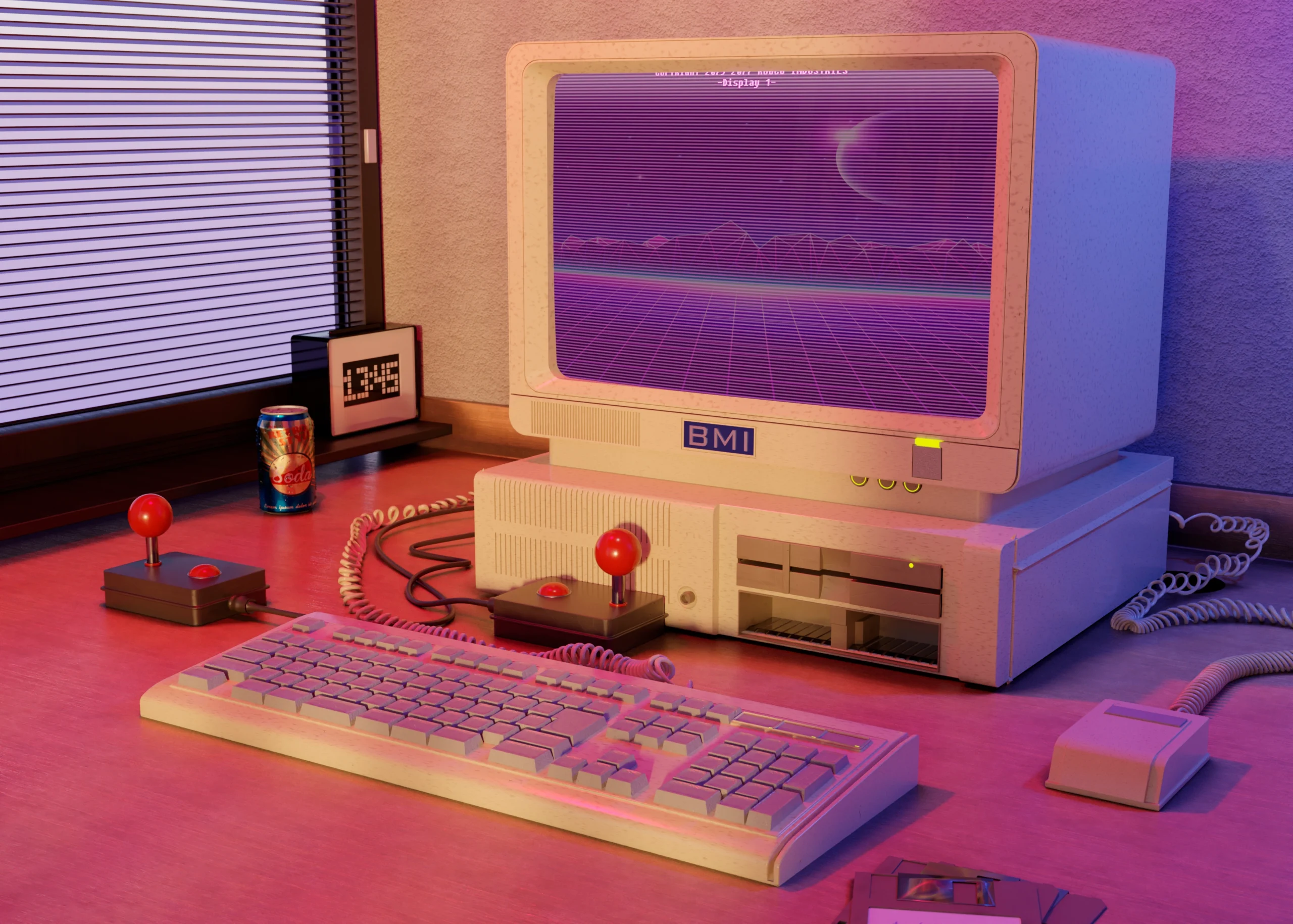In today’s fast paced world, we often think of modern technology as the pinnacle of human innovation. However, what if some ancient technology better than ours From the mysterious construction of the pyramids to the advanced knowledge of astronomy and medicine, ancient civilizations possessed remarkable technologies that still leave us in awe.
Despite the lack of modern tools, these ancient technologies were often more sustainable, efficient, and resourceful, offering solutions that continue to inspire us today. In this article, we’ll explore how ancient technology was not just ahead of its time but, in some cases, far superior to what we have now.
Ancient Technology Better Than Ours: Unveiling the Mysteries of the Past
When we think of cutting edge innovation today, our minds often go straight to the latest gadgets and advanced machines. However, “Ancient Technology Better Than Ours” reveals that some technologies from ancient civilizations may have been far more advanced, efficient, and sustainable than the tools we use today.
Despite being centuries old, these technologies continue to spark curiosity and admiration for their ingenuity. In this article, we will explore the hidden gems of ancient innovations, highlighting why they may be better than the ones we rely on in the modern world.
The Precision of Ancient Construction Techniques
One of the most captivating aspects of ancient technology is the precision with which monumental structures were built. Take the Great Pyramids of Giza, for example. Despite lacking modern machinery, ancient Egyptians used basic tools to construct these massive structures with incredible accuracy. In fact, the alignment of the pyramids is so precise that they remain aligned with the stars to this day.
Unlike modern construction techniques, which rely heavily on machinery, ancient builders worked with a deep understanding of geometry, astronomy, and the environment. This allowed them to create structures that have withstood the test of time, while many modern buildings may crumble in a fraction of that time.
Sustainable Energy Solutions: The Water Clocks and Solar Powered Systems
Ancient civilizations had a deep connection with nature, which influenced their approach to energy solutions. Water clocks, known as Clepsydra, were used by ancient cultures like the Greeks and Chinese for timekeeping. These devices relied on water flow, a renewable resource, and were accurate enough for their needs.
Compare this to modern electronic timekeeping, which relies on non renewable resources. Additionally, solar power, though not as advanced as today’s systems, was harnessed by ancient cultures. The Egyptians, for instance, used sunlight to heat water for baths, demonstrating an early form of solar energy use.
Ancient Medicine: Advanced Knowledge of Healing
Ancient technology wasn’t just limited to tools and structures; it also extended to healthcare and medicine. Ancient civilizations, such as the Egyptians, Greeks, and Chinese, had an advanced understanding of the human body and medical treatments that were surprisingly sophisticated. The use of herbs, acupuncture, and surgery were well documented and used effectively long before the advent of modern medicine.
In some cases, ancient healing practices were more effective and less invasive than today’s treatments, which often rely on synthetic drugs and complex technologies. Their holistic approach to wellness, focusing on balance and natural remedies, proves that ancient medical technologies were not just ahead of their time, but in some ways, better than our own.
The Science of Astronomy: Knowledge Beyond the Stars
When it comes to understanding the cosmos, ancient civilizations were pioneers in astronomy. The ancient Egyptians, Mayans, and Sumerians all had detailed knowledge of the stars, planets, and lunar cycles. The Mayan calendar, for instance, is more accurate than the Gregorian calendar used today, and ancient Egyptian astronomers could predict solar eclipses with astounding precision.
Modern technology has certainly expanded our knowledge of the universe, but it’s fascinating to consider that ancient cultures achieved a level of astronomical understanding that surpassed what we could do without advanced telescopes or computers.
Water Management: The Romans’ Engineering Marvels
Another area where “Ancient Technology Better Than Ours” stands out is in the field of water management. The Romans, for example, built aqueducts that could transport water over vast distances, ensuring that cities had a constant water supply.
These aqueducts were built with such precision that many are still standing today, in stark contrast to modern systems that often struggle with inefficiencies and environmental challenges. The Roman ability to manage water resources, construct drainage systems, and build public baths was unparalleled and remains an inspiration for engineers even today.
The Great Construction Feats of Ancient Civilizations: Ancient Technology Better Than Ours
Ancient technology, often regarded as better than ours, has amazed modern engineers and historians alike. The precision of ancient engineering is evident in monumental structures like the pyramids in Egypt, which were built with remarkable accuracy without modern tools.
The Great Wall of China stands as a testament to advanced building techniques, where innovative methods were used to create one of the longest man made structures in history.
Another fascinating example is Stonehenge, where ancient builders used stonework precision and astronomical knowledge to align massive stones with celestial events.
The materials used in ancient architecture, such as granite and limestone, have proven to be incredibly durable, withstanding centuries of weathering. In fact, ancient materials were sometimes more resilient than modern construction materials.
What makes these feats even more impressive is that these civilizations achieved such greatness without machinery. Ancient engineers understood the importance of weight distribution and geometry, applying advanced techniques to construct structures that remain standing today. The secrets of ancient technology, which are still studied and admired, show that their innovations in architecture were far ahead of their time.
The Great Construction Feats of Ancient Civilizations: Ancient Technology Better Than Ours
The Precision of Ancient Engineering
Ancient technology, often regarded as better than ours, has amazed modern engineers and historians alike. The precision of ancient engineering is evident in monumental structures like the pyramids in Egypt, which were built with remarkable accuracy without modern tools.
The Great Wall of China stands as a testament to advanced building techniques, where innovative methods were used to create one of the longest man made structures in history.
The Construction of Stonehenge: Using Stonework Precision and Astronomy
Another fascinating example is Stonehenge, where ancient builders used stonework precision and astronomical knowledge to align massive stones with celestial events.
Materials Used in Ancient Architecture
The materials used in ancient architecture, such as granite and limestone, have proven to be incredibly durable, withstanding centuries of weathering. In fact, ancient materials were sometimes more resilient than modern construction materials.
Technological Advancements Without Machinery
What makes these feats even more impressive is that these civilizations achieved such greatness without machinery. Ancient engineers understood the importance of weight distribution and geometry, applying advanced techniques to construct structures that remain standing today.
Sustainable Energy Solutions in Ancient Times: Ancient Technology Better Than Ours
Water Clocks and Solar Energy
In the quest for sustainable energy, it’s fascinating to explore how ancient civilizations were ahead of their time in energy efficiency. Ancient Technology Better Than Ours is evident when examining how the Greeks and Chinese utilized water clocks, a technology that relied on the natural flow of water to keep time, reducing the need for modern electrical devices.
This concept of harnessing natural forces for practical use is also seen in the use of solar power. The ancient Egyptians, for example, effectively utilized the sun for heating water and food, showcasing early applications of solar energy without modern systems.
Wind Power: Early Forms of Windmills
Wind power, another early energy solution, was harnessed through the creation of Persian windmills. These windmills were used to pump water, showcasing the ingenuity of ancient engineers in making use of natural resources. Additionally, they represented some of the first instances of harnessing wind energy for mechanical work, a practice that paved the way for today’s wind turbines.
Efficient Use of Natural Resources
What makes these ancient technologies remarkable is their efficient use of natural resources. Ancient societies thrived without modern power grids, relying instead on sustainable and renewable energy sources. In comparison to today’s energy systems, these technologies were eco friendly and far more sustainable, providing a blueprint for a greener future.
The sustainable nature of these technologies proves that ancient innovations were not only ahead of their time but potentially more sustainable than the technologies we depend on today.
Medicine and Healthcare: Advanced Knowledge of Healing
Ancient Healing Techniques and Herbal Medicine
Ancient healing techniques have long fascinated us, with many wondering if Ancient Technology Better Than Ours. In civilizations like Ancient Egypt, China, and Greece, herbal medicine was a cornerstone of healthcare.
The use of plants like ginseng, aloe vera, and frankincense was not just a tradition, but a testament to their wisdom. These early cultures also pioneered surgeries and medical tools, laying the foundation for modern practices.
Holistic Approaches to Health
Holistic approaches to health, such as acupuncture in China and Ayurvedic medicine in India, show the depth of ancient knowledge. These practices weren’t just about treating illness; they focused on balancing the body and mind, offering a more integrated approach to wellness.
How Ancient Medicine Was More Effective
Ancient medicine was often more effective due to its emphasis on preventative care and natural remedies. Unlike today’s reliance on pharmaceutical drugs, ancient systems focused on healing through diet, lifestyle, and natural therapies, offering gentler, yet powerful alternatives.
The Impact of Ancient Medical Systems on Modern Medicine
The influence of ancient medical systems on modern medicine cannot be overstated. From acupuncture to herbal medicine, ancient wisdom continues to shape contemporary healthcare. In many ways, Ancient Technology Better Than Ours highlights how these ancient practices can complement or even surpass modern approaches to healing.
Ancient Astronomy: The Science of the Stars
Knowledge of Celestial Bodies
Ancient civilizations like the Mayans and Egyptians possessed an extraordinary understanding of celestial bodies. Their knowledge of the stars and planets was far ahead of its time.
The ancient Egyptians, for instance, closely studied the night sky and used constellations to align their monuments. The Mayans, known for their advanced mathematics, charted the movements of planets with remarkable precision.
Astounding Accuracy of Ancient Astronomical Observations
The accuracy of ancient astronomical observations, particularly by the Mayans and Egyptians, is a testament to their profound understanding of the cosmos. They were able to track planetary movements and predict celestial events, such as eclipses, with astounding precision. This knowledge was essential for agriculture, navigation, and religious practices.
Ancient Calendars and Timekeeping
One of the most remarkable feats of ancient technology was the Mayan calendar, which could predict celestial events with incredible accuracy.
This calendar system, based on the movements of the sun, moon, and planets, was used for scheduling ceremonies and planting seasons. The Egyptians also developed a solar calendar that helped them track the passage of time, ensuring that their agricultural cycles were aligned with the stars.
The Mayan Calendar and Its Accuracy in Predicting Celestial Events
The Mayan calendar is often considered one of the most accurate timekeeping systems in history. It not only predicted the movement of celestial bodies but also reflected the Mayans’ deep understanding of the cosmos. This calendar is a testament to their advanced knowledge, which, even today, is considered better than many modern systems.
Ancient Egyptian Alignment with the Stars
The ancient Egyptians famously aligned their pyramids with the stars, particularly the constellation of Orion. This alignment wasn’t just for aesthetic purposes but held deep religious significance. It was believed that the Pharaohs’ souls ascended to the stars, specifically Orion, after death. This integration of astronomy into architecture is one of the clearest signs of ancient technology better than ours.
Architectural Alignment to Astronomical Events
The alignment of pyramids and other structures with astronomical events is another example of ancient technology better than ours. The Great Pyramid of Giza, for instance, is aligned with the stars with incredible accuracy, pointing toward the true north with a precision that would be difficult to replicate today.
How Ancient People Integrated Their Understanding of the Cosmos into Daily Life
Ancient civilizations didn’t just study the stars for scientific curiosity they integrated their knowledge into daily life. From agricultural cycles to religious rituals, astronomy played a central role.
The Mayans used their detailed astronomical observations to plan crop planting, while the Egyptians built monuments that were designed to reflect the positions of celestial bodies, making their understanding of the cosmos a vital part of their culture and daily routines.
Water Management and Engineering: The Roman Genius
The Roman Aqueducts: Engineering Marvels
The Roman aqueducts, a testament to ancient technology better than ours, revolutionized water transportation. These remarkable structures allowed Romans to transport water over great distances with unmatched efficiency.
Their engineering genius lay in the precise calculations and architectural designs that made the system durable, reliable, and effective in meeting the needs of vast populations.
Efficient Water Systems: Romans Ahead of Their Time
Roman efficient water systems were not limited to aqueducts alone. Their sewage and drainage systems, some of which are still operational today, set the foundation for modern sanitation. These innovations were ahead of their time, proving the Roman understanding of hydraulics and civil engineering.
Roman Baths and Public Hygiene: A Sophisticated Approach
Roman baths were not only places for hygiene but were integral to public life. The sophistication of these public baths showcased advanced water management, with complex plumbing that delivered hot, cold, and tepid water in an organized manner. The environmentally friendly practices used in water conservation were cutting edge for their era.
Comparing Ancient and Modern Water Management Systems
Comparing these ancient water management systems with modern ones reveals just how advanced the Romans were. Their sustainable, innovative practices are still studied and admired today, cementing the idea that ancient technology was better than ours in many ways.
Sustainability and Environmental Impact: How Ancient Technology Was Better Than Ours
Ancient civilizations, such as the Inca, were pioneers in sustainable practices. They embraced eco friendly methods, like terraced farming, which maximized land use and minimized environmental damage. These societies thrived without the pollution and waste management issues we face today, showcasing a deep respect for nature.
Ancient Technology Better Than Ours
Ancient technologies often outlasted modern equivalents due to their simplicity, efficiency, and minimal environmental impact. Unlike today’s high energy consuming machines, ancient methods operated on a much smaller scale, reducing their carbon footprint significantly.
The Longevity of Ancient Practices
The longevity of ancient practices is a testament to their sustainability. Civilizations like the Inca developed systems that nurtured the earth, creating a balance between human activity and nature. Their techniques, passed down through generations, reflected a sustainable mindset that many modern technologies still lack.
Environmental Benefits of Ancient Technologies
Ancient technologies boasted lower carbon footprints than today’s alternatives. The circular economy approach practiced by many ancient cultures involved recycling, reusing, and reducing waste, making their impact on the planet far gentler. These systems did not exploit resources but instead worked harmoniously with the environment.
Comparison of Ancient and Modern Technology: Why Ancient Technology is Better Than Ours
Modern Technology’s Shortcomings
Modern tech often relies heavily on non renewable resources, contributing to the depletion of vital resources and environmental harm. Pollution, electronic waste, and overuse of energy are just a few of the environmental challenges associated with modern technologies. These issues point to the need for more sustainable practices in today’s digital era.
Ancient Technology’s Superior Efficiency
In contrast, ancient technologies were remarkably efficient. They used minimal resources yet achieved impressive results. Ancient systems were often powered by renewable sources, such as wind, water, and human labor, which meant they didn’t rely on finite energy sources.
The materials used in ancient technology were also durable, ensuring longer lasting solutions that are often more sustainable than today’s throwaway culture.
Learning from the Past: What Modern Technology Can Learn
One of the key lessons modern technology can learn from ancient innovations is the importance of sustainability and resource efficiency. By revisiting ancient practices, we can explore how to reduce our reliance on harmful, non renewable resources. Ancient methods could offer valuable insights into designing technologies that are not only effective but also eco friendly and durable.
FAQs:
Q1. What is meant by “Ancient Technology Better Than Ours”?
“Ancient Technology Better Than Ours” refers to the concept that some technologies developed by ancient civilizations were more advanced, efficient, and sustainable than modern day technologies.
These innovations, such as precise construction methods, sustainable energy systems, and advanced medical knowledge, continue to amaze researchers and challenge the notion that our current technology is the pinnacle of human achievement.
Q2. How did ancient civilizations manage to build massive structures without modern technology?
Ancient civilizations, such as the Egyptians, Romans, and Mayans, used a deep understanding of geometry, astronomy, and engineering principles to build massive structures with incredible precision.
They didn’t rely on modern machinery but rather crafted tools, advanced planning, and manpower to construct structures like the pyramids, the Great Wall of China, and Stonehenge, which have stood the test of time.
Q3. How was ancient medicine better than modern healthcare?
Ancient medicine often focused on holistic healing, natural remedies, and prevention, which were gentler on the body compared to modern pharmaceuticals.
Techniques like acupuncture in China, herbal medicine in Egypt, and surgery in ancient Greece were effective in treating various ailments. Many of these ancient practices are still used today due to their proven effectiveness and minimal side effects.
Q4. Did ancient civilizations use sustainable energy solutions?
Yes, ancient civilizations were remarkably resourceful in using sustainable energy. For example, the Egyptians used solar energy for heating water, and the ancient Greeks and Chinese utilized water clocks that relied on the flow of water, a renewable resource.
Additionally, windmills and watermills were used for mechanical work in ancient Persia, showcasing early forms of renewable energy that were far more sustainable than many modern systems.
Q5. What makes ancient astronomy more accurate than modern methods?
Ancient astronomers, such as the Mayans and Egyptians, were able to predict celestial events with incredible accuracy, sometimes even more so than modern methods. The Mayan calendar, for example, is considered more accurate than the Gregorian calendar used today.
Their understanding of the stars, planets, and lunar cycles was derived from careful observation, precise measurements, and a deep connection to the natural world.
Q6. How did the Romans revolutionize water management systems?
The Romans were pioneers in water management, with their aqueducts, sewage systems, and public baths. Roman aqueducts were engineering marvels that transported water across long distances, providing clean water to their cities.
Their sewage systems and public sanitation techniques were advanced for their time, ensuring public health and hygiene—systems that remain in use today in modified forms.
Q7. What are some examples of ancient technologies that were more sustainable than modern ones?
Ancient technologies often worked in harmony with nature, making them more sustainable. For instance, Roman aqueducts used gravity to transport water without the need for pumps, and ancient agricultural practices like terracing and crop rotation helped maintain soil fertility.
Additionally, the use of wind and water as power sources in ancient civilizations reduced dependence on non renewable resources, unlike modern technologies that often rely on fossil fuels.
Q8. Can modern technology learn from ancient innovations?
Absolutely! “Ancient Technology Better Than Ours” provides valuable lessons for modern technology. By studying ancient practices, we can find ways to integrate sustainable energy sources, reduce our environmental impact, and create more durable, efficient systems.
There’s much to be learned from ancient engineers and innovators who crafted solutions that were ahead of their time.
Q9. Why do ancient technologies still fascinate us today?
Ancient technologies fascinate us because they demonstrate human ingenuity, resilience, and a deep understanding of the natural world without relying on modern tools and resources.
The mystery surrounding how these technologies were achieved using only simple tools and knowledge continues to spark curiosity and admiration. Their durability and relevance in today’s world prove that these ancient innovations were, in many ways, superior to modern alternatives.
Q10. How did ancient civilizations understand the cosmos without modern telescopes?
Ancient civilizations like the Egyptians, Greeks, and Mayans observed the stars and planets with remarkable accuracy. Without telescopes, they relied on careful observation of celestial patterns, which allowed them to develop highly accurate calendars and even predict solar and lunar eclipses.
Their advanced understanding of the cosmos helped them align their structures and rituals with astronomical events, something that continues to be admired today.
Conclusion:
“Ancient Technology Better Than Ours” challenges our perceptions of innovation and progress. The ingenuity of ancient civilizations, whether in engineering, medicine, energy, or astronomy, proves that they had a deep understanding of the world and created technologies that were often more sustainable, efficient, and in tune with nature than our modern systems.
While we’ve made remarkable advancements, the timeless wisdom embedded in ancient technologies offers valuable lessons for today’s world. By revisiting and learning from the past, we can build a more sustainable, efficient, and harmonious future




